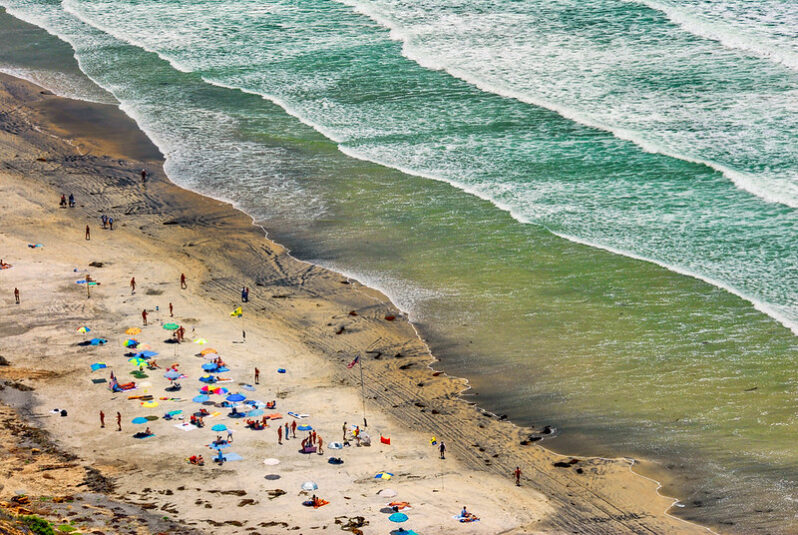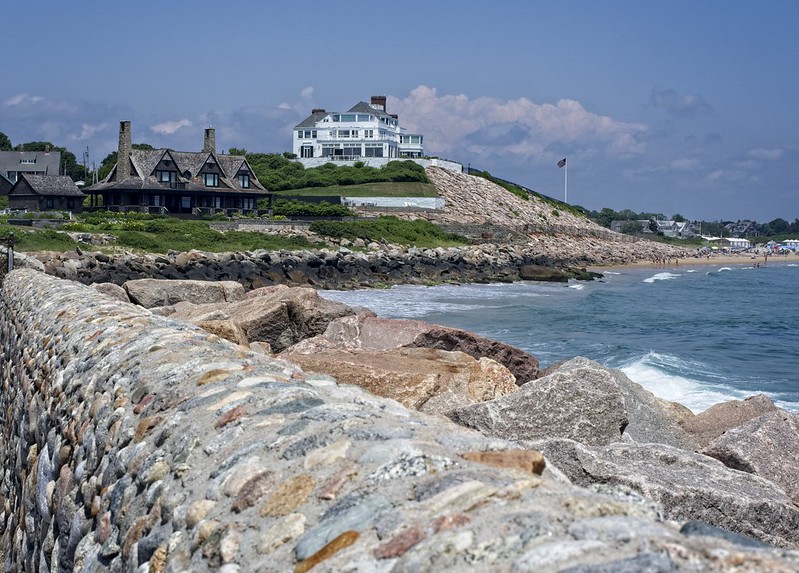The global impact of sand mining on beaches and dunes – Ocean & Coastal Management

Beaches and coastal dunes have always supplied sand for a wide range of uses, and initially the extracted volumes were limited to buckets, wheelbarrows, or small pickup truck loads. However, starting in the late twentieth century, and thanks to urban development, especially for coastal tourism, coastal and river sand has been extracted at an accelerated pace, and on a much grander scale…
Beach Loss Through Sea-Level Rise Will Affect Underserved Communities the Most – Sea Grant California

A new study shows that equitable coastal access might become another victim of climate change – unless we plan proactively.
As the rising sea level slowly erodes California’s beaches, underserved communities are most affected by the loss, according to preliminary results in a new study funded by California Sea Grant and the California State University Council on Ocean Affairs, Science & Technology (COAST)…
Gov. DeSantis touts post-Hurricane Ian beach renourishment funding – Florida Politics

Volusia County is set to receive $37.7M out of the $100M set aside for beach renourishment.
Volusia County and other areas that suffered beach erosion from Hurricane Ian and Hurricane Nicole are set to receive $100 million for beach renourishment projects as part of legislation passed by lawmakers and signed by Gov. Ron DeSantis in December…
‘It’s reaching a crisis point’: Outer Banks leaders say they’re out of funding to save threatened beach communities – WRAL News

Dare County leaders said communities are at risk from coastal erosion, but state law is holding them back from finding potential solutions.
Dare County leaders said they can no longer afford to build back beaches in the Outer Banks that have been swallowed by the ocean, sending multiple houses collapsing in recent years…
How sea level rise contributes to billions in extra damage during hurricanes – Yale Climate Connections

Had Ian hit a century ago, when sea levels were about a foot lower, the storm probably would have caused billions less in storm surge damage, judging by the results from two studies looking at storm surge damage from 2012’s Hurricane Sandy in New York. Taken together, the study results suggest that rising seas left a huge portion of U.S. coastal infrastructure – much of it built during the 20th century – vulnerable to storm surges.
Small increases in storm surge can cause huge impacts…
An Alaskan Town Is Losing Ground—and a Way of Life – the New York Times

For years, Kivalina has been cited—like the Maldives, in the Indian Ocean, or the island nation of Tuvalu, in the Pacific—as an example of the existential threat posed to low-lying islands by climate change…
On a visit to the state in 2015, President Barack Obama flew over Kivalina and posted a photograph of the island on social media from the air. “There aren’t many other places in America that have to deal with questions of relocation right now,” Obama wrote, “but there will be.” He described what was happening in the village as “America’s wake-up call.”
Seven years later, Kivalina’s move is still mostly in the future, even though the island continues to lose ground…
Can Development Laws Elevate Us Out of Sea Level Rise?

Watch Hill is an old neighborhood, where houses with names like Windridge, Waveland and Sea Swept began to take their positions on the ridge more than 160 years ago…
But Watch Hill’s most implacable foe has always been Mother Nature. In 1938, the Great Hurricane wiped fifty houses off Napatree Point, a finger of land curling into the sound. Today, the village is under the increasingly frequent assault of water coaxed by tidal force or blown in by Nor’easters over streets and parking lots, cutting off access to Napatree and giving the old house names a sardonic twist…
‘Sand is like gold.’ The pricey race to restore Florida beaches before the next hurricane – KOAM News Now

For decades, Florida has been restoring its beaches by dredging or trucking in more sand. But the practice is becoming more challenging — and expensive, thanks to the rising cost of beach-quality sand. Offshore sand deposits, especially on Florida’s southeast coast, are dwindling after decades of repeated beach restoration projects. As local governments squabble over the right to use the remaining sand, its price is rising…
Florida beaches were already running low on sand. Then Ian and Nicole hit – the Washington Post

“I think we’re starting to discover that, despite our best efforts and wanting to throw as much money at this as possible, it has become very difficult to keep these beaches as wide as we would like to keep them,” Robert S. Young, a geology professor at Western Carolina University and director of the Program for Developed Shorelines… “We simply don’t have the capacity to hold all of these beaches in place.”
